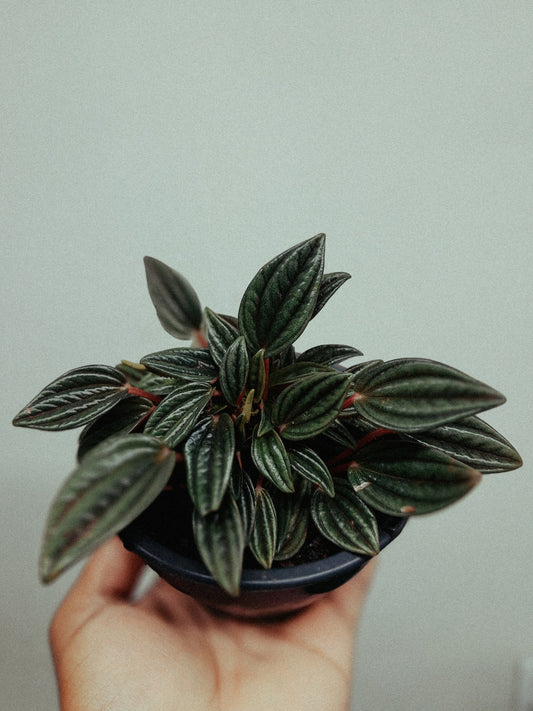Peace Lilies, also known as Spathiphyllum, are a popular species of indoor plants known for their beautiful and vibrant white flowers, making them a favorite among homeowners, gardeners, and flower enthusiasts alike. With proper care, Peace Lilies can thrive and flourish for years to come, adding to the aesthetic appeal of your home or office. This comprehensive guide will walk you through everything you need to know about Peace Lily Care, from how to properly water them, to how to best manage the temperature and humidity of their environment.
Care for Peace Lily
Watering Peace Lilies
Peace Lilies are known for their ability to adapt to low light conditions, making them ideal for indoor spaces, however, they are also very sensitive to changes in water and soil conditions. It is important to avoid overwatering and underwatering, both of which can be harmful to the plant. To ensure that your Peace Lily is getting the right amount of water, follow these tips:
- Water your Peace Lily once a week, or when the top layer of soil is dry to the touch.
- When watering, be sure to use room temperature water, as cold water can shock the plant and cause root damage.
- Be sure to drain any excess water from the saucer, as standing water can cause the roots to rot.
Proper Light Conditions for Peace Lilies
Peace Lilies are highly adaptable to low light conditions, but they will thrive in bright, indirect light. To provide the best light conditions for your Peace Lily, place it near a window that receives bright, indirect light, but not direct sunlight. Direct sunlight can cause the leaves to scorch and turn yellow, reducing the plant's overall health and appearance. If your Peace Lily is not receiving enough light, its leaves will become elongated, and its flowers will be fewer and smaller.
Temperature and Humidity for Peace Lilies
Peace Lilies are native to the warm and humid climates of the tropics, and as such, they prefer a warm and humid environment. To ensure that your Peace Lily thrives, maintain a temperature range of 60-85°F and a relative humidity level of 60-80%. If the air in your home is dry, consider using a humidifier to maintain the optimal humidity levels for your Peace Lily.
Soil and Fertilization for Peace Lilies
Peace Lilies prefer a well-draining soil that is rich in organic matter. A good potting mix should be used, with perlite added to help improve the soil's drainage. Fertilize your Peace Lily every 6-8 weeks with a balanced, water-soluble fertilizer. Be sure to follow the instructions on the fertilizer label, as over-fertilization can cause damage to the plant.
Repotting Peace Lilies
Peace Lilies will benefit from being repotted every 2-3 years, or when the roots have outgrown the current pot. When repotting, choose a pot that is 2-3 inches larger than the current pot and add a layer of fresh potting mix to the bottom of the new pot. Carefully remove the plant from the current pot, and gently loosen any tangled roots before placing it in the new pot. Fill the pot with fresh potting mix and water thoroughly.
Pests and Diseases of Peace Lilies
Peace Lilies are relatively low maintenance plants, but they are not immune to pests and diseases. Some common pests that can affect Peace Lilies include spider mites, mealybugs, and thrips. If you notice any pests on your Peace Lily, remove them by gently wiping the leaves with a damp cloth or using an insecticidal soap. If the infestation is severe, you may need to apply a pesticide.
Some common diseases that can affect Peace Lilies include root rot, powdery mildew, and leaf spot. Root rot is caused by overwatering, while powdery mildew and leaf spot are caused by humid and damp conditions. To prevent disease, be sure to provide adequate light and air circulation, and avoid over-fertilizing and overwatering. If you suspect that your Peace Lily is suffering from a disease, remove any infected leaves and treat the plant with a fungicide.
Pruning and Propagation of Peace Lilies
Peace Lilies should be pruned regularly to maintain their shape and encourage new growth. Pruning should be done after the plant has finished flowering, and it involves removing any yellow or dead leaves and cutting back the stems. Pruning will also encourage the plant to produce new leaves and flowers.
Peace Lilies can be easily propagated by dividing the clumps of leaves and roots. To propagate your Peace Lily, carefully remove it from its pot and gently separate the clumps of leaves and roots. Re-pot each clump in a separate pot with fresh potting mix, and water thoroughly.
Conclusion
Peace Lilies are beautiful and low maintenance indoor plants that are perfect for homeowners, gardeners, and flower enthusiasts alike. With proper care, Peace Lilies can thrive and flourish for years to come, adding to the aesthetic appeal of your home or office. This comprehensive guide has provided you with everything you need to know about Peace Lily Care, from how to properly water and fertilize the plant, to how to manage its temperature and humidity levels. By following these tips, you can ensure that your Peace Lily will thrive and remain healthy for years to come.



